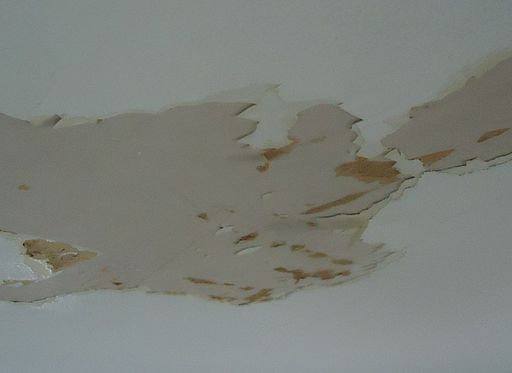How to Tell if a Basement Had Water Damage
Things can be a bit nerve-wracking during a home inspectionInspection is the careful examination and assessment of a pr... More since you never know what the inspector might find. Some things you will know about while others will come as surprises. But if you’re looking at a new home, you’ll want to look out for signs of water damage as they can be costly to repairRepair is the act of fixing or restoring damaged property, m... More, depending on how far it’s spread. Basements in particular, are the most vulnerable to this kind of destruction, mostly because water will flow to the areas of least resistance.
When wet, the building materials in the basement can develop moldMold is a type of fungus that grows in damp or humid conditi... More in as little as 24 hours and attract insects. If these issues aren’t treated in a timely manner, the whole house structureStructure refers to the framework or components of a buildin... More is threatened which can make the property incredibly difficult to sell.
So how exactly can you tell if a basement has had water damage? There are some signs to look for, including the ones listed below.
Musty or MildewMildew is a type of fungus that grows on damp surfaces, typi... More Smell
Even if the water that flows into the basement is clean, it will become musty even after it dries out. While this is often the stereotype of all basements, they shouldn’t smell like this, hence why they are most common in old, outdated and sometimes abandoned houses. Especially during the warmer seasons like late spring and summer, these odors can be particularly strong due to high amounts of humidityHumidity is the amount of moisture or water vapor present in... More. But regardless of moisture levels, the odors won’t go away until the issue is resolved.
MoldMold is a type of fungus that grows in damp or humid conditi... More and mildewMildew is a type of fungus that grows on damp surfaces, typi... More are the prime result of moisture and associated with musty smells. While moldMold is a type of fungus that grows in damp or humid conditi... More sporesSpores are microscopic reproductive units of fungi or mold t... More do feed off moisture particles, they can still thrive in dry conditions as they float through the air in search of more moisture.
It shouldn’t take long to notice a musty smell in the basement, especially after it rains.
Signs of MoldMold is a type of fungus that grows in damp or humid conditi... More or MildewMildew is a type of fungus that grows on damp surfaces, typi... More in Cracks and Crevices
Especially if the homeowner has tried to remove all cases of moldMold is a type of fungus that grows in damp or humid conditi... More themselves, it may be hard to find the affected areas. But small corners, cracks and crevices are where these fungiFungi are a group of organisms, including mold, mildew, and ... More tend to thrive. When looking for moldMold is a type of fungus that grows in damp or humid conditi... More or mildewMildew is a type of fungus that grows on damp surfaces, typi... More, check where the wall meets the floor, under boxes, behind appliances and other dark, moist areas where moisture often sits.
When looking for moldMold is a type of fungus that grows in damp or humid conditi... More, it can come in all different colors, including black, brown, yellow, green, and even pink (although pink is not as common)! But most often, moldMold is a type of fungus that grows in damp or humid conditi... More will appear as either slimy, fuzzy, or speckled. It can even grow on places where the surface is dry; it’s a sign of old water damage.
Especially if the home is prone to water damage, homeowners will do everything they can to cover up water stains, and they may have become experts if they’ve lived there for a while. But in most cases with DIY water restorationRestoration is the process of returning a property to its pr... More, you’ll surely find a sign.
Flaking Paint from the Walls
One of the most common mistakes made by homeowners is applying waterproofingWaterproofing is the application of materials or coatings de... More to the wall of a basement that’s leaking. Regardless of if the material was designed to seal from the inside, it will eventually bubble up and flake off when the water dries. Although there are exceptions, such as if the material is a new, space-age coating that’s different from everything on the market.
When water seeps through the basement walls, it won’t affect the front surface of the coating. Instead, it will build up behind it where pressure will force it away from the stone, brick, or block. So if you see any signs of paint flaking or even any blisters in the pain coating, the basement is most likely wet in some areas.
Chalky, White ResidueResidue is any leftover material, such as soot, dust, or che... More or Efflorescence
Experienced home inspectors will know all the clues to look for during each inspectionInspection is the careful examination and assessment of a pr... More. One of the biggest includes efflorescence, which is a white, chalky-looking residueResidue is any leftover material, such as soot, dust, or che... More from salt or minerals left behind from water.
Some cases of basement water damage are so pronounced that distinct white lines will be left behind from evaporated water on the walls. Some experts say that when the lines are located higher up on the wall, there may be an issue with soil grading. But in more moderate cases, there will be a rough, dry, white haze.
Dealing with a Wet Basement
It’s never fun to find out the house you’re interested in buying has had issues with water damage, especially in the basement. But looking out for these signs will save you the trouble of moving forward and having to deal with these issues in the future. You’ll know right away that unless the homeowner decides to have them fixed, it’s not a good purchase.
Professional Water Damage RestorationWater damage restoration is the professional process of clea... More
In the case that you already bought the home and discovered water damage in your basement, or you are trying to sell your home with a water-damaged basement, it’s highly recommended to have this issue resolved before putting it on the market. As you can imagine, nobody wants to deal with any problems after making a major purchase on a home.
When dealing with water damage, working with a water restoration professional is often the best way to go, especially if the destruction has covered a large area. Many companies are available 24/7 to respond if needed, however, emergency services may not be necessary if you need to replace building materials.
During the water damage restorationWater damage restoration is the professional process of clea... More process, the professionals will set up large dehumidifiers and air movers to remove any and all moisture from affected building materials and belongings. They can also take care of any musty or mildewMildew is a type of fungus that grows on damp surfaces, typi... More odors as well as moldMold is a type of fungus that grows in damp or humid conditi... More issues with advanced deodorizing technology and moldMold is a type of fungus that grows in damp or humid conditi... More removal services.
Following the dryingDrying is the process of removing moisture from materials, s... More process, any destroyed porousPorous describes a material that contains small openings or ... More materials like drywall, carpeting, ceiling tile and insulationInsulation is a material used in buildings to reduce the tra... More will be replaced with new materials. Other surfaces like marble, granite and aluminum will be deep cleaned to remove any remaining sporesSpores are microscopic reproductive units of fungi or mold t... More.
Following the restorationRestoration is the process of returning a property to its pr... More process, you’ll be ready to put your home on the market (if you’re selling) and have the peace of mind that this issue has been fully resolved.












